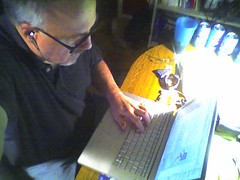[This entry is moblogged, so please forgive the typo’s and misswordings.]
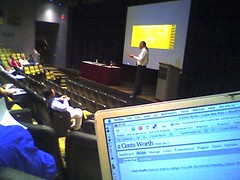 Will is starting his session called “What’s Up With Wikis?” He has a very comfortably presence on the stage. He’s not tastfully promoting his new book, Blogs, Wikis, Podcasts, and Other Web Tools for the Classroom.
Will is starting his session called “What’s Up With Wikis?” He has a very comfortably presence on the stage. He’s not tastfully promoting his new book, Blogs, Wikis, Podcasts, and Other Web Tools for the Classroom.
His wiki handouts are at:
http://weblogedlinks,pbwiki.com
http://webloggedlinks.pbwiki.com/
IT’s a very exciting time, with lots of different people sharing their ideas. Wikis are the very best tool for getting people together to share. “Anyone can edit anything at any time, in a true wiki.” Will is using Peanut Butter wiki for his handouts, and he is actually using the wiki as the basis for his presentation. This is cool.
|
As an aside, Will is using his tablet PC for the presentation, which means that he is driving it with a stylus. This is interesting. |
Wikipedia has just flipped to 1,000,000 articles. This is astounding, since the encyclopedia will never exceed 65,000 articles. There is a site (url unknown) that illustrates the real time updating of the Wikipedia.
Will is vandalizing a Wikipedia article about the Chicago Cubs. People here (in Chicago) are being very gracious about it. A lot of nerve. A member of the audience has just interrupted Will, asking, “how do I know that the information here is accurate.” A great discussion has ensued. I’m not sure that the young woman gets it yet.
The entire South African Curriculum is on a wiki. It isn’t the greatest example. But conceptually it’s looking the right directions. Will suspects that textbook companies are quaking in their boots.
Will is demonstrating Writely. I haven’t actually seen this before. Very impressive. It really looks like MS Word.
Tim Lauer
I’ve stayed in the same room where Tim Lauer, a principal of an elementary school in Seattle Portland, and a master of implementing Web 2.0 technology in his schools. He has a fairly veteran teaching staff. He’s talking, today, about utilizing the web to facilitate better communication in the school.
Tim is using Del.icio.us for his handouts.
http://del.icio.us/timlauer/itsc
From the beginning, the school wanted a web presence that was valuable resource both externally and internally. Tim is talking about an early conference that he attended where he got to hear people like Chris Andreessen (inventor of the first graphical web browser, Mosaic). But he also saw a presentation by a high school teacher in Denver, who was using Gopher. But what was interesting was that the teacher was having students generate their own content and then put it on the net.
The school (Lewis Elementary School) decided to use Manilla Movable Type. Now he’s talking about a display they have in a common area of the school, where they use an application called TickerShock. It grabs information from an RSS feed, which they feed through a blog with content. Very cool.
He uses a technique that he calls, “Classroom Notes”. During a 15 minute period each week, teachers are asked to write about two paragraphs, describing what they are doing in the classrooms. They are using Manila for this, so the entries are posted as a blog entry.
Tim needed to have a mapping of the homes of his students. Very possible, except that it’s not a good use of a Saturday afternoon, coding all of those addresses in to get their longitude and latitude. He discovered a web site called Batch Geo Coder. You type or paste in the addresses, and it processes them into long/lat coordinates. It also includes a feature that converts the data to a Google Earth format. Very very cool.
I just realized, in looking back at this entry, that the pictures makes it look like a small audience in Will’s and Tim’s presentations. The opposite is surely the case. It was a large lecture all, and it was practically full of enthusiastic educators. The Illinois attendees of this conference were a wonderful and eager group to work with.
 Gaggle, the home of student e-mail and other classroom communication tools, has just announced a classroom blogging tool.
Gaggle, the home of student e-mail and other classroom communication tools, has just announced a classroom blogging tool.
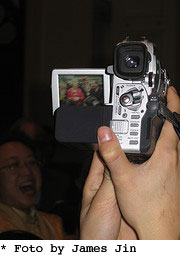 There is an interesting conversation happening over at
There is an interesting conversation happening over at  I know the industrial age well. I was born and raised firmly within its influence, as I grew up in a small mill town in western North Carolina. Most of my neighbors worked in the textile plants, producing yarn and fabric for the world. In nearby Gastonia, they made tires, guided missile parts, and chain saws (I worked for Homelite Chainsaws for a year). In that time, we were focused on the finished product, something that when completed, would perform, very well, the task for which it was designed.
I know the industrial age well. I was born and raised firmly within its influence, as I grew up in a small mill town in western North Carolina. Most of my neighbors worked in the textile plants, producing yarn and fabric for the world. In nearby Gastonia, they made tires, guided missile parts, and chain saws (I worked for Homelite Chainsaws for a year). In that time, we were focused on the finished product, something that when completed, would perform, very well, the task for which it was designed.  I’ll be talking about “Harnessing the Changing Shape of Information” the end of this week at the California
I’ll be talking about “Harnessing the Changing Shape of Information” the end of this week at the California 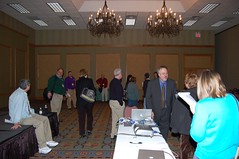 I’m back in Raleigh and back in my office, after getting up early to take the dog for her customary four-mile Saturday morning walk. Yesterday turned out to be a great day with my presentations, getting to know (even better) my friends on the conference committee of the IL-TCE (Technology Conference for Educators), and finally having some time after the conference to visit with my friend
I’m back in Raleigh and back in my office, after getting up early to take the dog for her customary four-mile Saturday morning walk. Yesterday turned out to be a great day with my presentations, getting to know (even better) my friends on the conference committee of the IL-TCE (Technology Conference for Educators), and finally having some time after the conference to visit with my friend 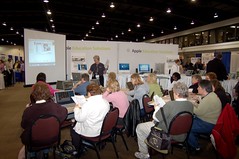 It’s 5:47 AM and I’ve been up for a few hours. It’s always like this before a
It’s 5:47 AM and I’ve been up for a few hours. It’s always like this before a 
